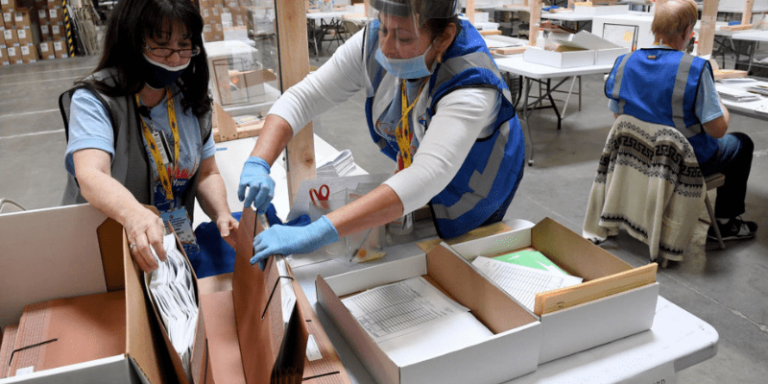Nevada Caucus: Will It Work Out Better Than in Iowa?
There were issues in Iowa, and now the same tech is being used in Nevada.
By: Sarah Cowgill | February 19, 2020 | 389 Words

(Photo by Ethan Miller/Getty Images)
This week, all eyes are trained on Nevada as Democrats gather in caucus venues to select a candidate as nominee for president of the United States. With the technical glitches that occurred during the Iowa caucus early this month – causing delayed and possibly challengeable results – voters are wary of the long-standing process and are already questioning the validity of results. The mess in Iowa cost one state party chairman his job and cast serious doubts as to whether party run caucuses can be trusted.
Concerns have arisen from precinct members about the technology they are using to tally votes. Precinct volunteers have been given iPads and new technology to use without training.
Nevada’s process is much like Iowa’s in practice: Voters meet at their designated precinct on the day of caucus or cast early ballots at their precinct leading up to the caucus. There they speak with one another, explaining why they are supporting one of the several candidates and trying and sway other voters to join them.
Accordingly, each precinct chair will utilize a Democratic Party purchased iPad, which includes a built-in link to a Google form called the “caucus calculator,” which comes pre-loaded with early-vote totals.
Under Nevada’s caucus rules, members choose a candidate immediately – in what is called a first alignment. After another round of votes results are again tabulated and if a candidate fails to reach 15%, voters can change their mind and switch to another candidate during the second alignment.
Then they allot the delegates to the candidate or candidates that meet the 15% threshold. Allocation of delegates is determined by the number of members voting per candidate multiplied by the number of members within the precinct.
Once the votes are logged on the iPad, the precinct chair will have campaigns sign off on the vote tally and call the Nevada Democratic Party hotline and report the results. Once votes are reported, a trained operator then compares voice records with the iPad to make sure they match.
Nevada is the third state on the national primary calendar. But its importance is not in the early scheduling – it is a state with a noteworthy minority (Hispanic) population and a significant number of shift-workers in the 24/7 economy. And after Iowa performed poorly with challenged results, all eyes now are trained on the desert southwest.
















